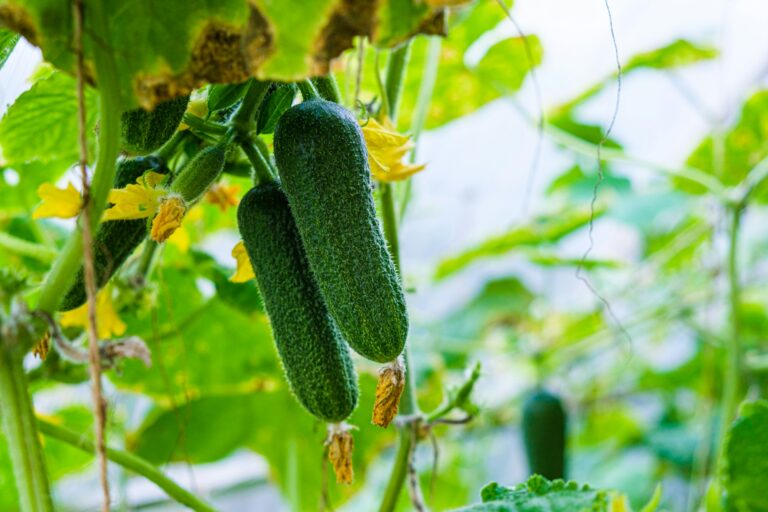The Ultimate Guide to Fertilizing Japanese Maple Trees

When it comes to plants, the concept of feeding them is often overlooked. While animals have gaping mouths and teeth to show when they need food, plants have different ways of signaling their need for nutrients. Japanese maple trees are no exception. These beautiful trees require proper nutrition to thrive, and as gardeners, it’s our responsibility to ensure they get what they need. In this comprehensive guide, we will delve into the why, what, when, and how of fertilizing Japanese maple trees.
Why Fertilize Japanese Maples?
Before diving into the details of how to fertilize Japanese maples, it’s crucial to understand why fertilization is essential for these trees. Let’s explore some key reasons:
Aesthetics
A well-fed plant will always look healthier and more visually appealing. Optimal nutrition provides the necessary ingredients for growth, leading to beautiful flowers, lush foliage, and vibrant bark. On the other hand, a malnourished plant will struggle to thrive and may appear sickly.
Vigor
Just like animals, plants require specific nutrients to support growth and development. Key molecules like proteins, ribozymes, and chlorophyll are essential for healthy cell function. Without these components, plants may experience stunted growth and reduced vigor.
Health
Proper nutrition plays a vital role in disease and pest resistance. When plants lack essential nutrients, they become more susceptible to stress, making them vulnerable to infections and infestations. By providing adequate nutrition, plants can better defend themselves against pathogens and pests.
What You’ll Need
As you embark on the journey of fertilizing Japanese maples, it’s essential to have the right tools at your disposal. Here are some items that will help you nourish your trees effectively:
Humus
Humus, also known as organic material, is a valuable resource for enhancing soil nutrition. It improves soil structure, water retention, and cation exchange capacity (CEC). Adding humus to the soil allows plants to absorb essential nutrients more efficiently, promoting healthy growth.
Fertilizer
Fertilizer provides a targeted approach to supplementing nutrients in the soil. Organic fertilizers, such as bone meal and compost, offer a natural way to enrich the soil. Synthetic fertilizers, while effective, may disrupt the soil microbiome. It’s best to choose organic fertilizers whenever possible to support a healthy ecosystem in your garden.
Soil Test
Before fertilizing your Japanese maples, conduct a soil test to determine its nutritional levels. Understanding the soil’s deficiencies will help you tailor your fertilization strategy to meet the tree’s specific needs. Soil testing kits are readily available for DIY testing or seek professional services for a more in-depth analysis.
When and How to Feed Your Trees
Now that you have the essential tools, let’s discuss the best practices for feeding your Japanese maple trees:
Planting Preparation
Before planting or transplanting a Japanese maple tree, enrich the soil with organic material. This amendment will enhance soil texture, improve nutrient content, and support healthy root development. Avoid fertilizing newly planted trees during the first growing season to allow the roots to establish properly.
Fertilization Schedule
Japanese maples should be fertilized in early spring, just before the leaves emerge. This timing ensures that the tree has sufficient nutrients to support its growth during the growing season. You can choose to use organic material like compost or well-rotted manure, or opt for commercial fertilizers designed for trees.
Root Zone Calculation
To determine the root zone of your Japanese maple tree, measure the circumference of the trunk and calculate the radius based on a simple formula. Critical roots typically run just outside the drip line of the tree. By understanding the root zone, you can apply fertilizers effectively to support root development and overall tree health.
Monitoring Nutrient Deficiencies
Keep an eye on your Japanese maples for signs of nutrient deficiencies, such as chlorosis or leaf discoloration. Conducting a soil test can help pinpoint specific nutrient deficiencies and guide your fertilization strategy. Avoid over-fertilizing, as it can lead to leaf burn and other issues.
Be Wise and Fertilize
Fertilizing Japanese maple trees is a rewarding task that can enhance their beauty and vitality. By providing the right nutrients at the right time, you can help your trees thrive and flourish in your garden. Remember to follow these guidelines for optimal results and enjoy watching your Japanese maples grow into stunning, healthy specimen trees.
Have any questions or insights to share? Feel free to leave a comment below! For more information on Japanese maples, check out these additional resources:
- 21 of the Best Japanese Maple Varieties
- A Guide to the Different Types of Japanese Maple Trees
- 13 of the Best Companion Plants for Japanese Maple Trees
- Leaf Spots on Japanese Maples: 7 Causes and Treatments
Remember, a well-fed plant is a happy plant! Let’s nourish our Japanese maples and watch them thrive in our gardens.
—
**





